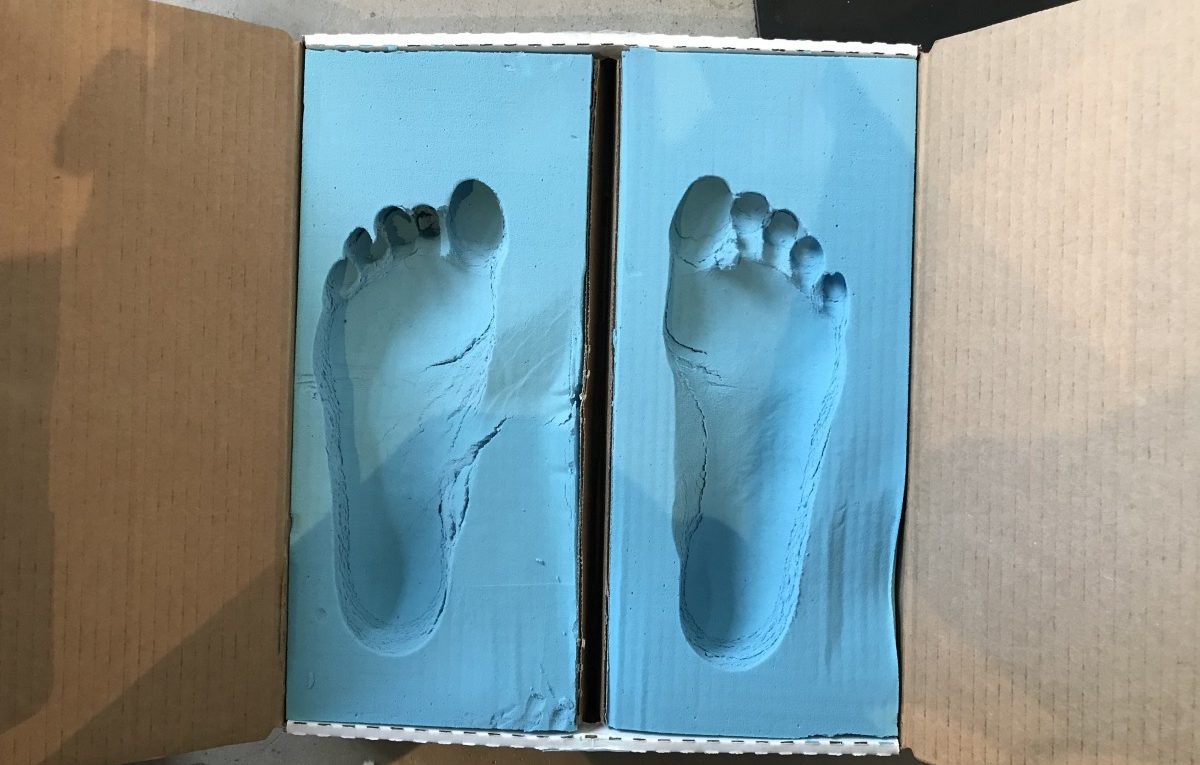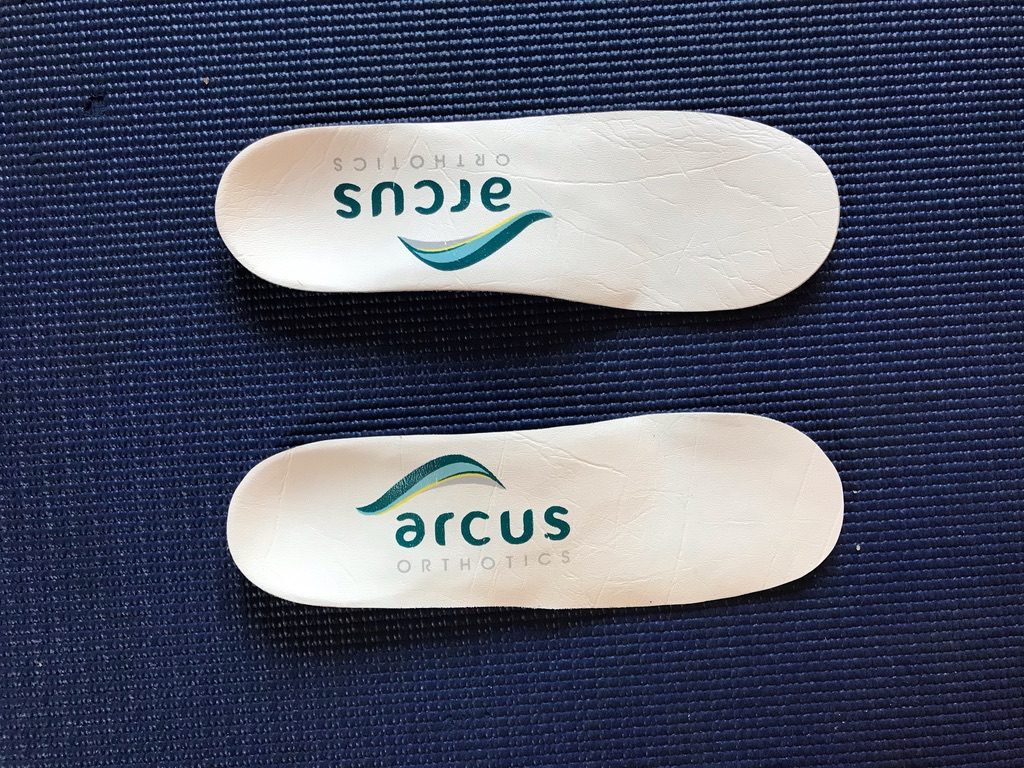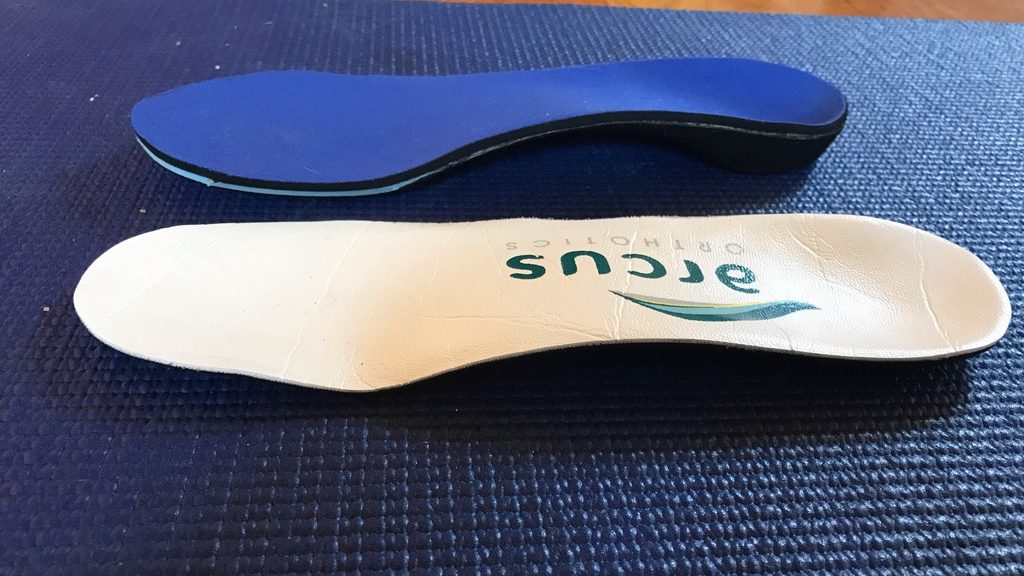
The first orthotic I received (blue) was too high volume to be worn in my ski boots. The second one (white) was much thinner but still provided decent support and alignment.
A friend who was a regular marathon runner once told me to get custom orthotics. I had some knee issues at the time, old injuries that would flair up if I started a consistent running routine, which the friend suggested that orthotics would help. But I was also 23 years old and broke at the time, so I opted for a cheaper over-the-counter insole instead.
This past year, as I’ve dug deeper into long ski touring and mountaineering efforts (and noticed lingering aches and pains I’ll blame on aging…), my curiosity about custom orthotics was piqued again. Not to mention, the more ski boots I test, the more mangled my feet seem to become.
I caught wind of Arcus Custom Orthotics, who make mail-order orthotics, handmade in the U.S. They don’t require a doctors visit, which helps to cut the price but still offers a fully custom fit. So, this season I finally took the plunge and ordered a set. Here are my thoughts after a season spent ski touring with orthotics.
Overview
Orthotics have long been used to treat specific foot issues and injuries (plantar fasciitis, arthritis, etc) but are common in athletic circles as well. In the past, consumers have had to get go to an actual podiatrist’s office and be prescribed an orthotic, a process that can cost anywhere from $200-$800 (which insurance may or assist with). Thanks to the age of the internet, though, if you just want to order custom footbeds for preventative purposes (or you have a known diagnosis from previous prescriptions), you can order them online.
Orthotics can be used for preventing injuries from overuse or alignment issues, treating known foot problems, or helping with recovery if you’re coming back from an injury. For prevention, it’s all about alignment. According to Adam Kaplan, podiatrist and founder of Arcus Custom Orthotics, the main idea is to seat the heel of the foot correctly, which then straightens alignment in the ankle, knee, hip and lower back. Having your joints properly aligned can then help prevent inflammation or arthritis, as well as increase your overall efficiency.
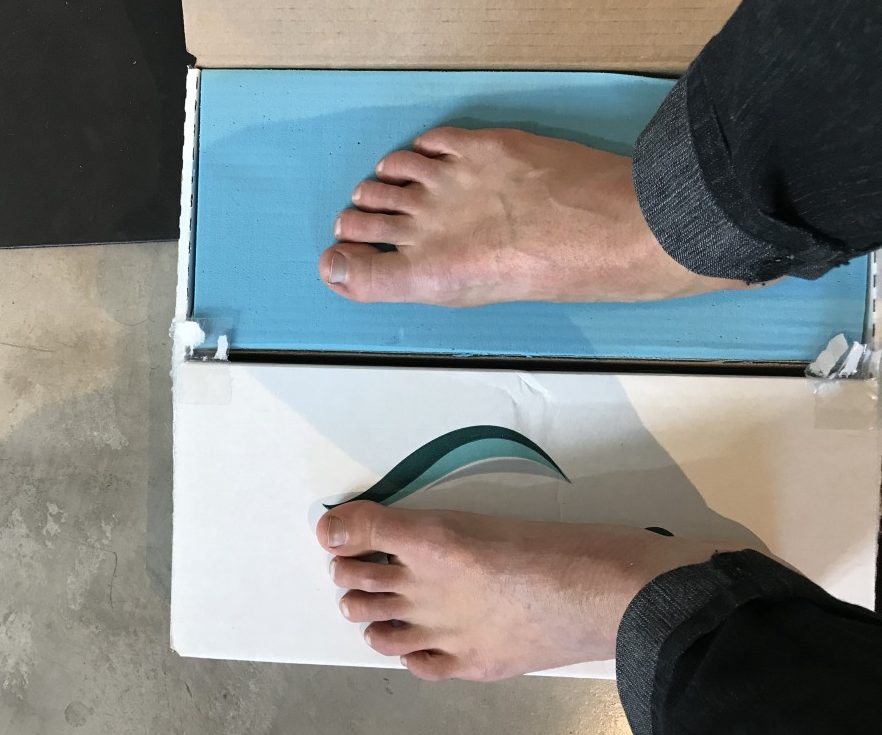
The foam mold honestly felt kind of weird but neat too. Once Arcus gets the molds back, they go through a fairly extensive process to hand make the orthotic.
This isn’t really a new idea in ski touring. Buy boots in any good shop and they’ll likely recommend you purchase an over-the-counter footbed to stick in during the heat molding process. The cheaper footbeds have done me well, but as I’ve increased the hours I spend touring, I’ve wondered if maybe there’s some benefit to a fully custom fit that I was missing.
The process
Since I didn’t have a specific ailment that required a trip to a podiatrist, my first step was to fill out a form on the Arcus website. Prompts included foot measurements, shape, arch height and intended use, as well as photos of my foot. Within a week or so, I received in the mail a cardboard box filled with blue, chalky foam.
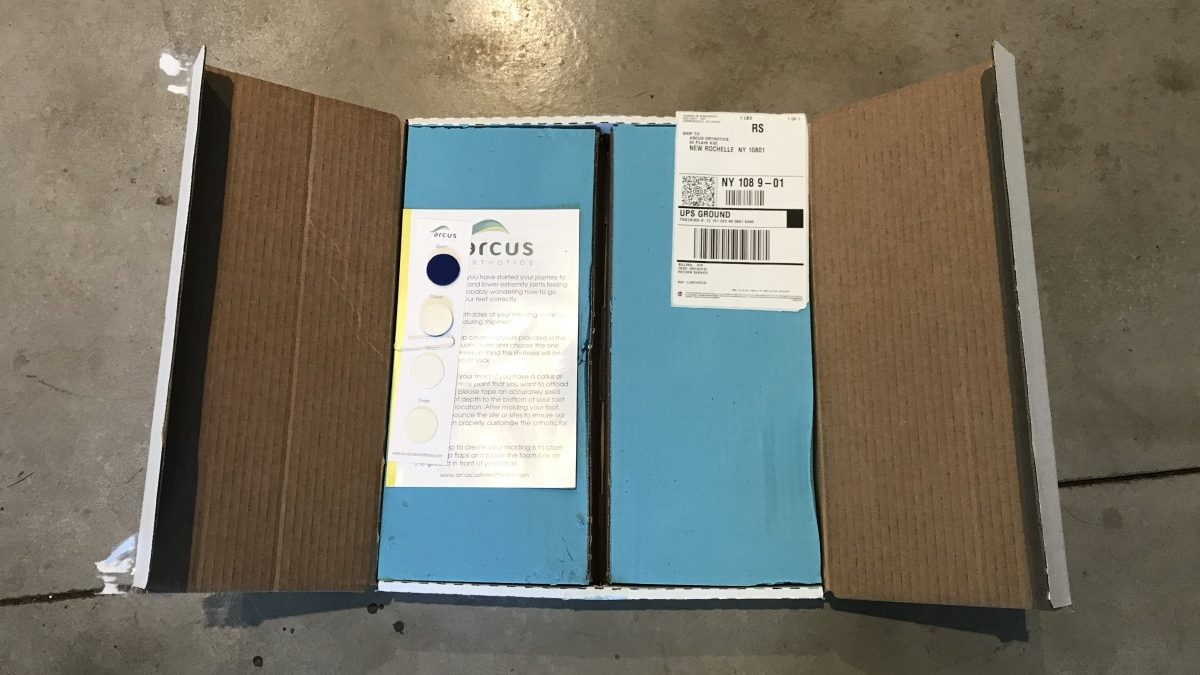
Included in the foam mold box is a sampling of surface materials and a shipping label to send back once you’ve imprinted your feet.
Following the instructions included in the box, I took the imprints of both my feet, shipped the box back with a prepaid label, and then waited. In two weeks, my new insoles arrived.
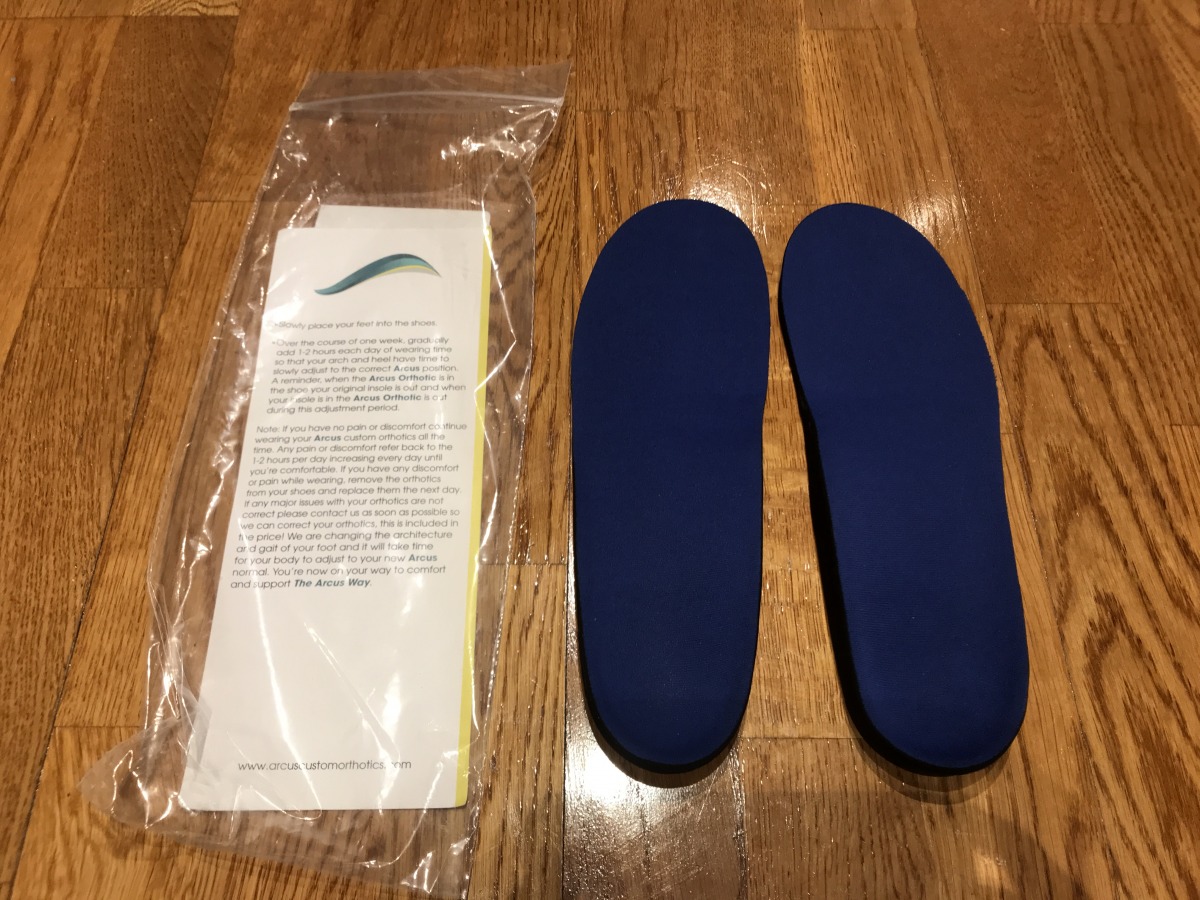
First round of insoles. These ended up being too high volume for ski boots, so I reached out to Arcus to get a thinner but equally supportive set.
At this point, I ran into trial and error specific to ski boots. Since I’ve made it a habit of cramming my feet into boots that are a size down from my typical shoe size, the orthotics I ordered based on the latter were too long and thick. Try as I might to trim the tips, I would smush my toes in even the highest volume boot. In the interest of getting a better fit for ski boots specifically, I reached out to Arcus and explained the situation. We discussed the ideal thickness for the insole, and length.
In a couple more weeks I had a new insole in the mailbox, this one truly custom for ski boots.
In the field
The biggest thing I noticed on days that I toured with the custom footbeds is how remarkably unnoticeable they were. That is, I could spend hours tromping up and sliding down hills and not think about my feet. The noticeable things were subtle — on long tours, I felt less fatigue in my legs and a general ease in my gait. My right knee, which is often sore after skiing seemed to be less so. Was that psychological? I like to think not.
The most notable day I recall was one of the first big outings of the season, where my partners and I skinned and skied multiple 2000+ foot laps in our local zone. Aside from cold toes (a common ailment I’ve yet to fully remedy…), my legs felt solid and well supported both up and down, all day and after. In general, the orthotics seemed to offer something that can be elusive in ski boots: true all day comfort.
Special considerations
The crew at Arcus can’t diagnose issues just from your foot impressions. If you have a specific ailment that you haven’t seen a doctor for, you’ll want to get a diagnosis before ordering an orthotic.
The orthotics are handmade in the U.S., as shown in this photo collage, which is actually pretty awesome and unique among the many varieties of footbeds on the market of late.
At $250 a pair, they’re pricier than the average over-the-counter footbed ($50-$100) but a bargain compared to prescription orthotics you might get from an orthopedist ($200-$800, which may or may not include co-pays etc).
Closing thoughts
If you’re a ski tourer who doesn’t consider whether your boots fit right, you probably don’t need to spend $250 to fix a problem that doesn’t exist. But if you’re in search of a custom fit, you want to experiment with maximizing your efficiency in ski boots, or you’ve got a known issue and want to get an orthotic without seeing a podiatrist, a mail-order custom orthotic could be the right choice for you.
See more boot fitting resources.
Manasseh Franklin is a writer, editor and big fan of walking uphill. She has an MFA in creative nonfiction and environment and natural resources from the University of Wyoming and especially enjoys writing about glaciers. Find her other work in Alpinist, Adventure Journal, Rock and Ice, Aspen Sojourner, AFAR, Trail Runner and Western Confluence.

